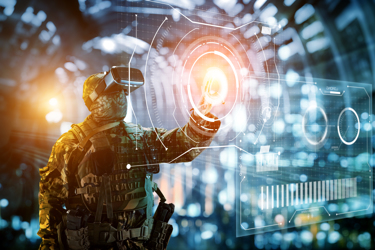4 Imaging Technologies Being Embraced By The Military

By John Oncea, Editor

Militaries are leveraging laser systems, digital imagers, novel image processing algorithms, and more to reduce the overall size, weight, and power of imaging systems. This will improve all military operations, from surveillance and reconnaissance to battlefield operations.
Imaging technology plays a critical role in the military, from intelligence to targeting and more. For example, military imaging equipment such as weapon sights is being equipped with HD technology to detect, recognize, and strike objects at long distances.
More specifically, consider Tonbo Imaging’s COBRA, a dual-sensor compact lightweight CQC/CQB Fusion Thermal Weapon Sight (FTWS) that is built on the state of the art uncooled thermal imaging core providing outstanding sensitivity and excellent image quality. It gets rid of poor contrast, ghosting, and fusion picture subsetting and, as a result, operators can perform effective and dependable target recognition, discrimination, and acquisition.
COBRA isn’t the only imaging technology the military is investing in, and here we look at four imaging technologies to keep an eye on: thermal detectors, infrared cameras, infrared sensors, and infrared jamming and countermeasures.
Thermal Detectors
Thermal detectors, because of their ability to capture the infrared radiation produced by all substances above absolute zero temperature, are revolutionizing thermal imaging systems by replacing large, complex-cooled thermal detectors with smaller, more affordable uncooled microbolometers. As a result, they are omnipresent in today’s military and are providing day-night working capability and the ability to perform in all weather conditions.
Maximize Market Research writes, “Thanks to its various advantages, thermal imaging technology has a large number of applications and is thus widely adopted in the military and defense sectors. It is generally used by the Army and Navy for border surveillance and law enforcement. It is also utilized in ship collision avoidance and guidance systems, ensuring safe navigation at sea.
“Thermal imaging has significantly reduced the risks associated with flying in low light and night-time conditions within the aviation industry however, in the military aviation sector, it plays a crucial role in identifying, locating, and targeting enemy forces. Besides that, thermal imaging is now being integrated into civil aviation for aircraft health monitoring purposes.”
Infrared Cubed
“Infrared (IR) is a form of electromagnetic radiation that is invisible to the human eye,” writes Defense Advancement. “All objects emit radiation relative to their temperature, and most of this radiation is in the infrared spectrum. This means that infrared detectors can be used to distinguish objects such as people, living things, aircraft and vehicle engines, and weapons.”
Defense Advancement cites three specific ways infrared is being used by the military:
- Infrared Cameras: Forward-looking infrared (FLIR) cameras are thermal imaging cameras that detect infrared radiation levels and convert them into images or videos. Depending on the intended use, these cameras may detect long-wave (LWIR), medium-wave (MWIR), or short-wave (SWIR) infrared. Military personnel may use IR cameras for various purposes, including intelligence, surveillance, and reconnaissance (ISR), navigating and operating vehicles at night, and seeing through smoke, fog, and dust. To enhance visibility, thermographic cameras can be combined with visible cameras in gimbals, creating EO/IR (electro-optical/infrared) systems for aircraft, vehicles, vessels, and static defenses like counter-UAS systems.
- Infrared Sensors: There are two types of IR sensors: cooled and uncooled. Cooled systems use cryogenics to maintain an extremely low temperature, resulting in high-quality and low-noise imagery with high sensitivity to temperature differences. However, they are more expensive than uncooled systems and have a larger SwaP footprint due to extra cooling equipment. Thermal imaging technology is also used in night vision goggles, binoculars, and weapons sights to capture infrared radiation, allowing ground troops and special forces to operate effectively at night.
- Infrared Jamming & Countermeasures: Heat-seeking missiles rely on infrared sensors to detect heat sources, like aircraft engines, and guide themselves toward their target. To counter these missiles, flares can be used to provide alternative heat sources and confuse the missile. Additionally, infrared jammers can be employed to overpower the missile's IR detector with high-powered signals.
